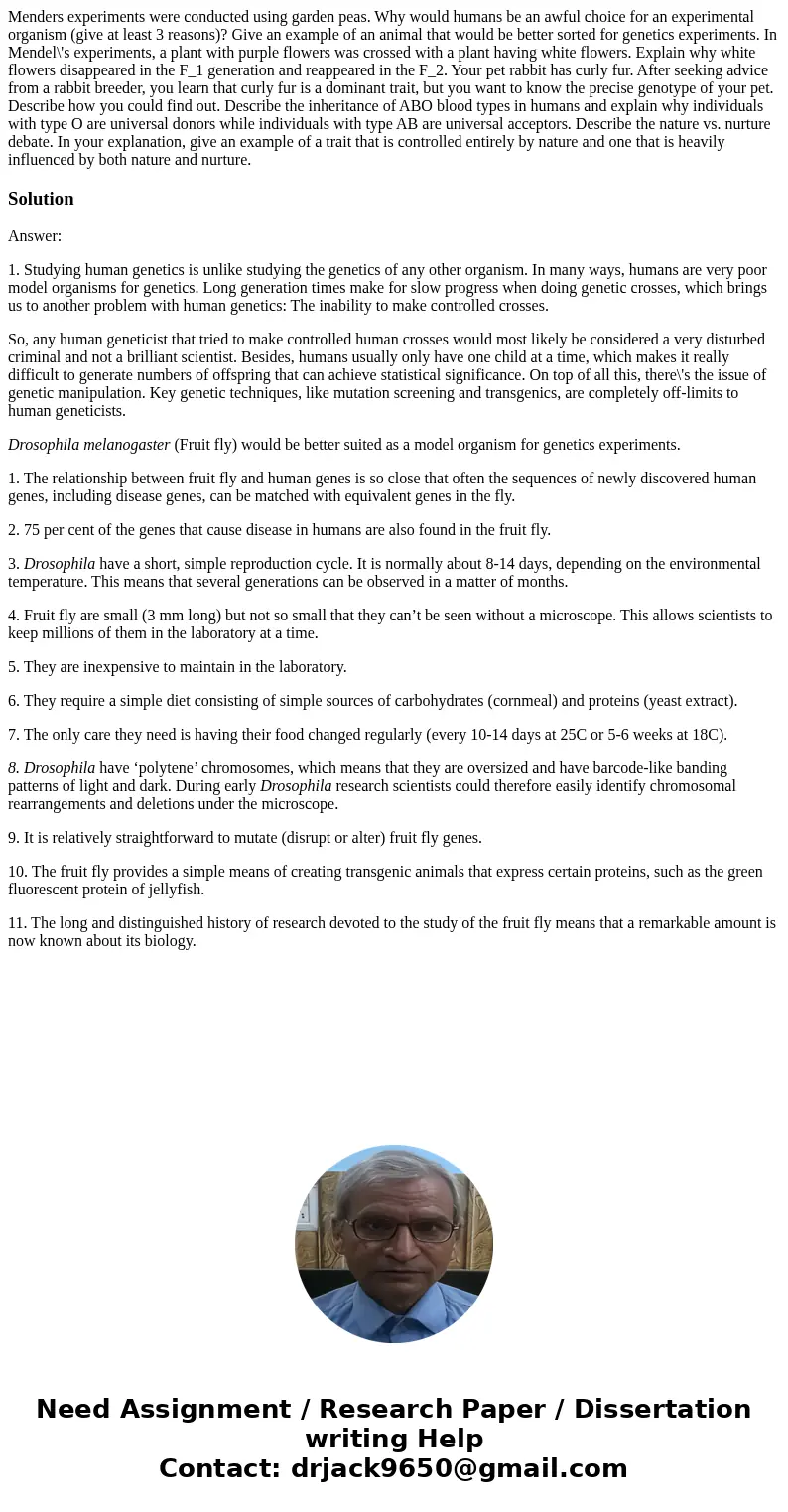Menders experiments were conducted using garden peas Why wou
Solution
Answer:
1. Studying human genetics is unlike studying the genetics of any other organism. In many ways, humans are very poor model organisms for genetics. Long generation times make for slow progress when doing genetic crosses, which brings us to another problem with human genetics: The inability to make controlled crosses.
So, any human geneticist that tried to make controlled human crosses would most likely be considered a very disturbed criminal and not a brilliant scientist. Besides, humans usually only have one child at a time, which makes it really difficult to generate numbers of offspring that can achieve statistical significance. On top of all this, there\'s the issue of genetic manipulation. Key genetic techniques, like mutation screening and transgenics, are completely off-limits to human geneticists.
Drosophila melanogaster (Fruit fly) would be better suited as a model organism for genetics experiments.
1. The relationship between fruit fly and human genes is so close that often the sequences of newly discovered human genes, including disease genes, can be matched with equivalent genes in the fly.
2. 75 per cent of the genes that cause disease in humans are also found in the fruit fly.
3. Drosophila have a short, simple reproduction cycle. It is normally about 8-14 days, depending on the environmental temperature. This means that several generations can be observed in a matter of months.
4. Fruit fly are small (3 mm long) but not so small that they can’t be seen without a microscope. This allows scientists to keep millions of them in the laboratory at a time.
5. They are inexpensive to maintain in the laboratory.
6. They require a simple diet consisting of simple sources of carbohydrates (cornmeal) and proteins (yeast extract).
7. The only care they need is having their food changed regularly (every 10-14 days at 25C or 5-6 weeks at 18C).
8. Drosophila have ‘polytene’ chromosomes, which means that they are oversized and have barcode-like banding patterns of light and dark. During early Drosophila research scientists could therefore easily identify chromosomal rearrangements and deletions under the microscope.
9. It is relatively straightforward to mutate (disrupt or alter) fruit fly genes.
10. The fruit fly provides a simple means of creating transgenic animals that express certain proteins, such as the green fluorescent protein of jellyfish.
11. The long and distinguished history of research devoted to the study of the fruit fly means that a remarkable amount is now known about its biology.

 Homework Sourse
Homework Sourse